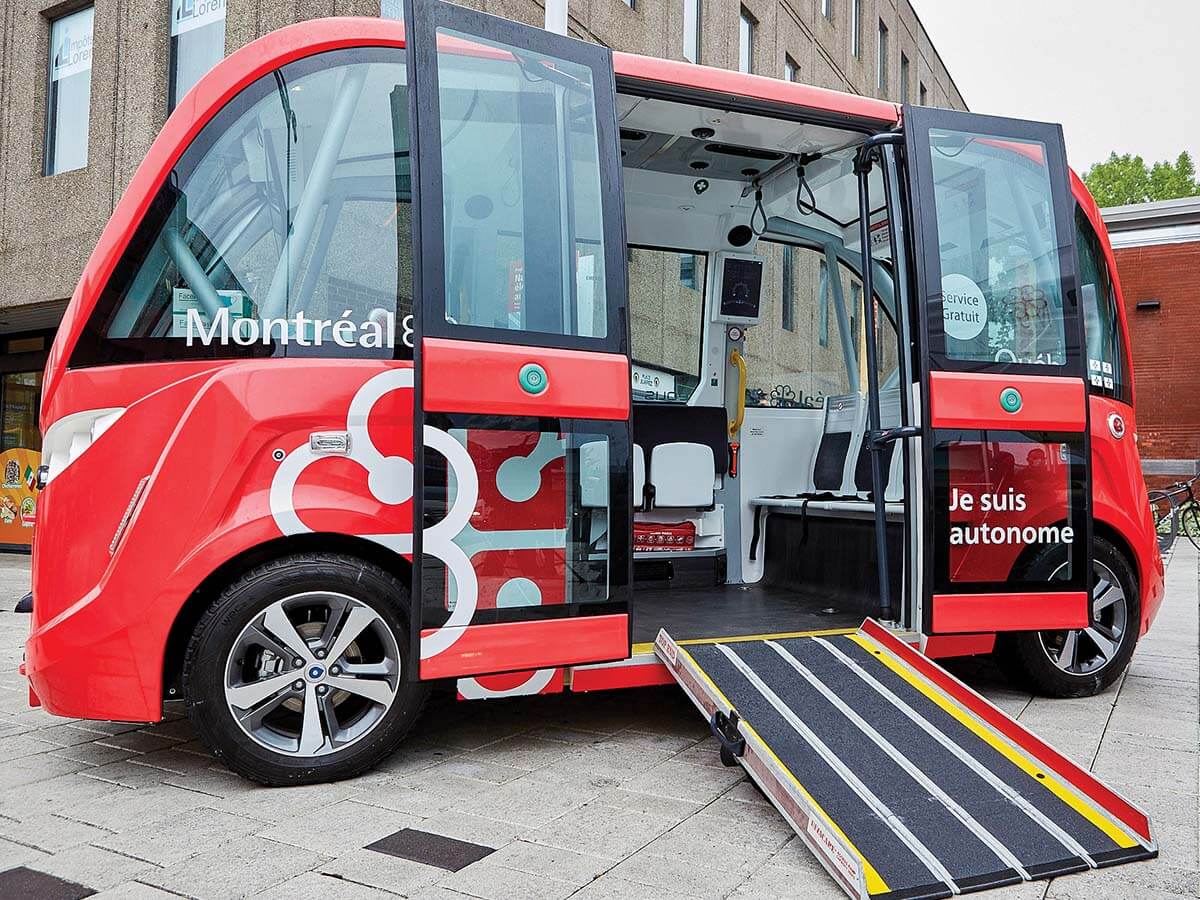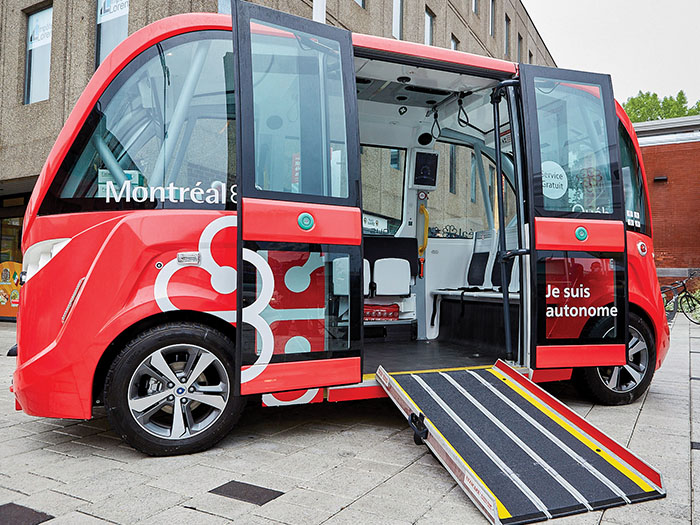
Meet the fleet of self-driving buses coming to a city near you
 A Quebec transportation company has launched pilot projects for autonomous buses in Montreal, among other cities across Canada (Photo courtesy Ville de Montréal)
A Quebec transportation company has launched pilot projects for autonomous buses in Montreal, among other cities across Canada (Photo courtesy Ville de Montréal)
At the Tokyo Olympics this past summer, a fleet of self-driving shuttle buses manufactured by Toyota was used to shuttle athletes around the Olympic village. Much like the bullet trains introduced during the 1964 Tokyo Games and the 5G network used throughout the Pyeongchang Games in 2018, the Olympic forum provided an international showcase for technologies that could shape our future.
Driverless shuttle buses appear to be on the horizon here in Canada as well following a series of pilot projects across the country. They may hold the key to a multi-modal transit model that adds convenience for those outside city centres and, ultimately, could help take more cars off the roads.
In Ontario, the Autonomous Vehicle Innovation Network (AVIN), a research and development partnership fund administered by the Ontario Centre of Innovation (OCI), was created to accelerate the development of automation and mobility tech like self-driving vehicles. AVIN claims they have helped create or retain over 1,600 jobs in the province thus far. The goal isn’t to replace existing municipal bus services—utilized by millions of Canadians each year—but to complement existing transit by providing services that connect different types of transit in one trip. This multi-modal approach is expected to be key to the future of travel.
In 2018, Keolis, a Quebec-based transportation company, introduced the first fully electric automated shuttle to appear on public roads in Canada, a 15-passenger vehicle that tops out at speeds of 25 kilometres per hour. “The autonomous shuttle aims to complete the first and last mile of the journey,” says Keolis vice-president of business strategy, Karine La Salle, citing the opportunity for self-driving buses to handle shorter trips meant to aid the 60 per cent of commuters who drive to and from transit hubs each day.
Pilot projects have since taken place in Montreal, Ottawa, Waterloo, Ont., Surrey, B.C., and other cities across Canada. In Beaumont, Alta., transportation company Pacific Western tested the first electric autonomous bus open to the public in Western Canada, designed by French manufacturer EasyMile, which has deployed its cable car-inspired automated shuttle model in 20 countries thus far.
Driverless buses have been on the horizon since 2017, when an automated shuttle bus also manufactured by EasyMile was introduced in a small town in Bavaria, Germany. The test project carried 20,000 riders in its first year and was hailed a success (the same could not be said for a scheduled 12-month test run in Las Vegas shortly thereafter—the bus was involved in a minor collision with a delivery truck on day one).
Self-driving vehicles use AI and motion-sensor technology to navigate roadways, and most emphasize caution over speed. During the first test pilot for a low-speed automated shuttle (LSAS) in Ontario on public roads, which took place in Ottawa’s Tunney’s Pasture, the two shuttles employed made a total of 14 emergency stops during its three-week trial—mainly in response to leaves blowing across the roadway. The Ottawa pilot examined not just how the vehicle performed, but how they were utilized—riders could either hop on at designated stops or arrange private rides via an app.
And it’s not just passenger vehicles being tested. With an estimated shortage of 25,000 truck drivers in Canada by 2023, Canadian companies are turning to automation to fill the void. Canadian Tire, for example, along with NuPort Robotics recently partnered with the Ontario government to test an auto-pilot feature on semi-tractor trailers that transport products between warehouse centres and rail terminals. It’s the precise type of chain-linking functionality that could see autonomous vehicles hit the roads on a more permanent basis sooner rather than later.
MORE BIG IDEAS
Read about new innovations in at-home 3D printing, how personal watercraft are switching to electric and why waiting in line may be a thing of the past.